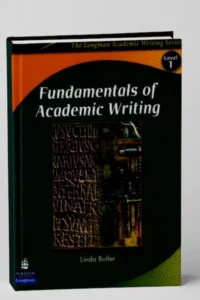Fundamentals of Academic Writing is intended for beginning-level students learning English as a second or foreign language in college, adult, or secondary school programs.
It offers a carefully structured approach that helps students develop basic writing skills, understand writing as a process, and build a solid foundation for becoming confident, independent writers in English.
Also Check: First Steps in Academic Writing Level 2
Fundamentals of Academic Writing
The text offers a wealth of realistic models to inspire and guide student writers. It also features clear explanations of sentence structure, grammar, and mechanics, followed by the extensive practice students need to assimilate the material and write with accuracy.
The text focuses on the elements of good sentences but within the context of simple descriptive and narrative paragraphs on student-centered topics. It effectively combines an introduction to basic paragraph structure with an emphasis on personal writing, the kind of writing that is most appropriate and motivating for learners at the beginning level.
There are interactive tasks throughout the text— pair work, small-group activities, and full-class discussions— that engage students in the learning process and complement the solitary work that writers must do.
There are also directions for keeping a journal, with plentiful suggestions for journal-entry topics, so that students write for fluency building in addition to doing the more formal assignments.
Finally, the extensive appendices and thorough index make the text a valuable and easy-to-use reference tool.
Organization of the Book
Fundamentals of Academic Writing takes students from a look at the big picture to the practice of specific elements and then to creating their own paragraphs, where they put together everything they have learned. The text has an introduction (Getting Started) followed by nine chapters and the appendices. Each Chapter Opener page includes a photograph and the chapter title to introduce the theme, and it also outlines the chapter’s contents. The chapters are organized as follows:
The second section of each chapter is devoted to the organization. In the early chapters, students learn what sentences and paragraphs are and how their papers should look. Later chapters deal with the elements of standard paragraph structure, patterns of organization within paragraphs (such as chronological order), and writers’ strategies for organizing their ideas.
Four strands, Sentence Structure, Grammar, Mechanics, and Vocabulary, combine in various ways, always with a focus on writing at the word and sentence level. You will find brief, clear explanations followed by valuable practice in the nuts and bolts of effective and accurate writing.
- Sentence Structure. Students first learn to identify subjects and verbs. Then they progress through four patterns of simple sentences, followed by compound sentences with and, but, and so, and finally, a brief introduction to complex sentences with time clauses.
- Grammar. Students focus initially on the basic parts of speech and later on the structures that will be most useful to them in writing the assigned paragraph for that chapter. For example, they study the verb tenses needed to write about everyday life (simple present), describe ongoing activities (present progressive), relate past events (simple past), and write about the future (be going to and will).
- Mechanics. Students learn such basics as elementary rules for capitalization, end punctuation, titles, and commas.
- Vocabulary. Students further their understanding of the parts of speech and broaden their vocabulary base, particularly in ways that will help them with the assigned writing.
In Chapter 1, students learn the term process, and they get an overview of the writing process. In Chapter 2, they learn the specific steps they will take as they plan, compose, and finalize their paragraphs.
In Chapters 2 through 9, students are guided step by step through the process of writing the assigned paragraph, initially with substantial support, and later with increasing demands on their own creativity. By consistently following these steps, they learn how to tackle a writing assignment.
This concluding section of each chapter has two goals: (1) to encourage journal writing and (2) to provide additional paragraph-writing tasks. The latter can provide further practice for the entire class or serve as extra assignments for those students ready to work independently.


